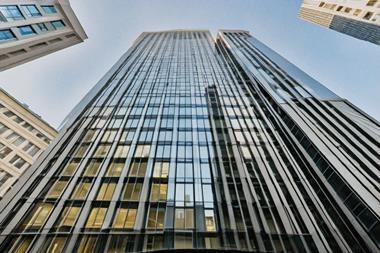US - The Alaska Permanent Fund Corporation's (APFC's) real estate portfolio performed better than other assets but has still contributed to the fund's $4.2bn (€3.2bn) drop in value in the second quarter of fiscal year 2009.
The US fund blamed the continued losses in the global financial markets for the fall, which brought the fund's value down to $28.8bn at the end of December 2008 and contributed to a $983m net loss for the fiscal year-to-date.
Michael Burns, chief executive officer (CEO), said: "This has been a difficult time to be an investor, even a long-term investor. Even those funds that appeared to ride out the early part of the storm, such as Yale and Harvard, are now posting significant losses."
The fund's real estate and absolute return portfolios delivered -5.2% and -8.9% respectively for the second quarter, while US stocks returned -23.0%, non-US stocks returned -22.5% and global stocks returned -21.3%.
The non-US bond portfolio showed the most resilience, returning 6.9% for the quarter.
The APFC currently allocates 10% of its total market value to real estate, of which 25% is held in Real Estate Investment Trust (REIT) securities, while the fund focuses primarily on investing in industrial, residential, office and retail properties.
The Alaskan fund's real estate portfolio ended the fiscal year at 30 June 2008 with a value of $4.2bn and returns of 0.5%. The directly-owned real estate portfolio included 65 properties valued at $3.5bn, and which returned 4.8% for the fiscal year.
However, the fund's public equity part of the real estate portfolio was valued at $667m in June and returned -17.1% for the fiscal year.
By comparison, Alaska Permanent Fund's investments returned 17.1% in September 2007 for the fiscal year and all of its asset classes delivered positive returns.
Steve Frank, chair of the APFC Board of Trustees, outlined the importance of diversification in the Corporation's annual report for 2008.
"Diversification is a very important part of building our portfolio. Last year's positive performance by every asset class was extremely unusual. Generally different types of investments will cycle down," said Frank.
"The strength of diversification lies in its ability to help the Permanent Fund make healthy gains during up markets and limit losses during the financial turmoil like we have experienced for the last year," he added.
The Board of Trustees sets an asset allocation that aims to provide 5% real rate of return over time.
If you have any comments you would like to add to this or any other story, contact Poppy Sketchley on + 44 (0)20 7261 4629 or email poppy.sketchley@ipe.com












